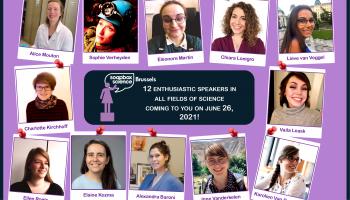Each day, we get up and try to live our best lives. Besides going to work and making time for our family and friends, we also have to make efforts to keep our bodies and minds healthy. Unfortunately, there is one factor which affects our health, but which we have little control over as an individual: air pollution. The United Nations Environment Programme has chosen September 7 to be the International Day of Clean Air for blue skies in order to emphasise the need to tackle this specific global problem, which costs 7 million human lives per year.
-Article from NASA-
By combining observations from three international spacecraft at Mars (including BIRA-IASB's NOMAD instrument), scientists were able to show that regional dust storms play a huge role in drying out the Red Planet.
Peer-reviewed research conducted by many independent parties worldwide, including the Royal Belgian Institute for Space Aeronomy, has presented firm evidence that mankind’s activities are the main cause of currently observed rapid climate changes. The IPCC published a new synthesis of this evidence, highlighting again the urgency of this message.
-Article from the European Space Agency-
New findings from the ESA-Roscosmos Trace Gas Orbiter set new upper limits on how much methane, ethane, ethylene and phosphine is in the martian atmosphere – four so-called ‘biomarker’ gases that are potential signs of life.
Astropolis, the new space science center in Ostend is finally opening its doors this summer! BIRA-IASB will also be present on July 22 & 23 with fun family activities.
On Saturday, June 26, 2021, from 2 p.m. to 5 p.m., 12 women and non-binary scientists in Belgium will tell you about their research during the Soapbox Science Brussels event at the Place de la Bourse/Beursplein.







